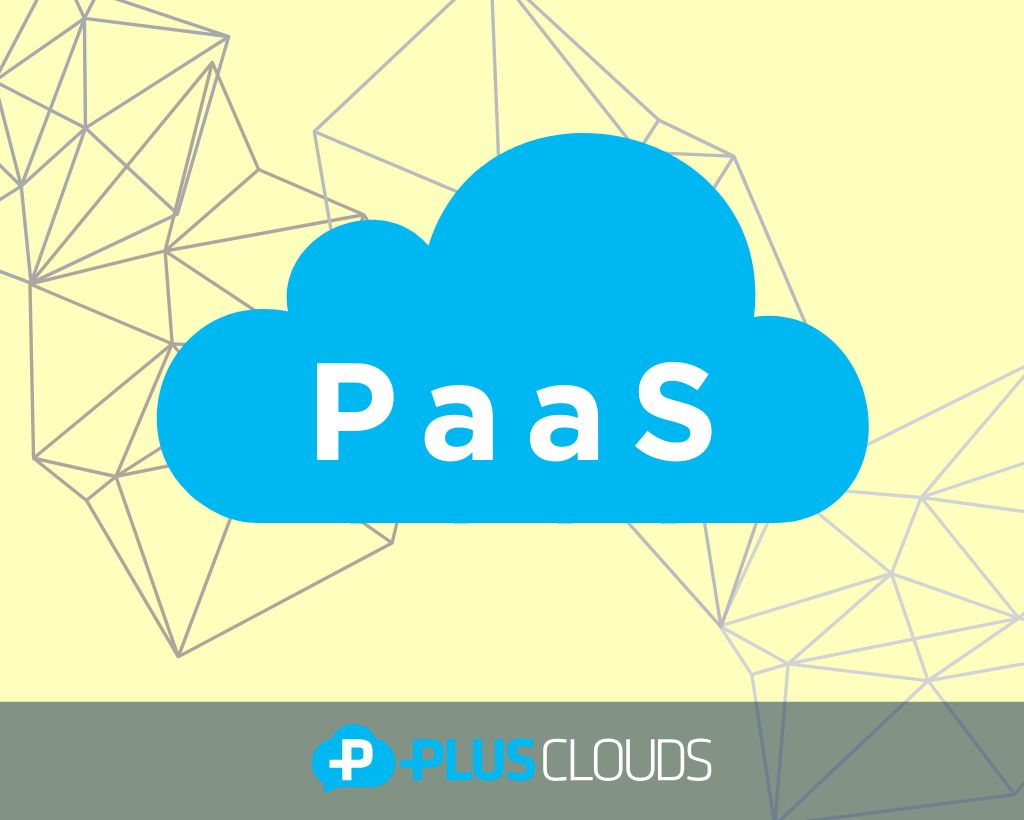
PlusClouds Eaglet hizmetini deneyin ve AI desteğiyle yüksek kaliteli B2B sıcak potansiyel müşteri ve fırsatları bulun.


Bulut bilişim (cloud computing) son yıllarda dijital dönüşümün temel yapı taşlarından biri haline geldi. Bu alanda en çok konuşulan hizmet modellerinden biri ise PaaS, yani "Platform as a Service"tir. Geliştiricilere, ekiplerine ve şirketlere büyük avantajlar sağlayan bu model, yazılım geliştirme süreçlerini çok daha verimli, esnek ve ölçeklenebilir hale getiriyor. Peki PaaS nedir? Hangi avantajları sunar? Hangi durumlarda tercih edilmelidir? Tüm bu soruların cevaplarını bu yazıda bulabilirsiniz.
PaaS, “Platform as a Service” yani "Hizmet Olarak Platform" anlamına gelir. Bu modelde, bir yazılım geliştiricisi uygulamalarını geliştirebilmek, test edebilmek, dağıtabilmek ve yönetebilmek için ihtiyaç duyduğu tüm platform altyapısına internet üzerinden erişebilir. Bu altyapı; sunucular, işletim sistemleri, veritabanları, geliştirme araçları, orta katman yazılımları, API’ler ve daha fazlasını içerebilir.
Kısaca özetlemek gerekirse:
IaaS (Infrastructure as a Service) size sanal donanım sağlar. PaaS, üzerine yazılım geliştirebileceğiniz hazır bir platform sunar. SaaS (Software as a Service) ise tamamen bitmiş ve kullanıma hazır yazılım hizmetidir.
PaaS sağlayıcıları, kullanıcılarına internet üzerinden erişilebilen sanal bir geliştirme ortamı sunar. Geliştirici, kendi cihazından yalnızca bir tarayıcı ve internet bağlantısı ile bu platforma erişebilir ve uygulamasını yazmaya başlayabilir. Tüm sunucu yönetimi, güncellemeler, güvenlik yamaları ve bakım işlemleri platform sağlayıcısı tarafından yürütülür.
Örnek olarak bir PaaS kullanıcısı:
-Web uygulamasını geliştirmek için gerekli olan programlama dilini (örn. Node.js, Python, Java) seçer.
-Geliştirme ortamında kodlamasını yapar.
-Uygulamayı test eder.
-Tek bir komutla canlıya alabilir.
Tüm bu süreç boyunca fiziksel bir sunucu kurma, yapılandırma veya bakım gibi karmaşık işlemlerle uğraşmaz.
PaaS hizmeti sunan platformlar genellikle aşağıdaki bileşenleri içerir:
1. Uygulama Geliştirme Araçları: Kod editörleri, hata ayıklama araçları, komut satırları, API’ler.
2. Veritabanı Yönetimi: MySQL, PostgreSQL, MongoDB gibi entegre veritabanı çözümleri.
3. Orta Katman Hizmetleri: Oturum yönetimi, güvenlik, entegrasyon çözümleri.
4. Barındırma (Hosting): Uygulamanın barındırılacağı güvenilir bir ortam.
5. Yazılım Entegrasyonu: Diğer SaaS ve şirket içi yazılımlarla entegrasyon imkânı.
6. Otomasyon Araçları: CI/CD (Continuous Integration/Continuous Deployment) desteği.
1. Hızlı Geliştirme Süreci
Geliştiriciler sıfırdan ortam kurmak yerine doğrudan kodlamaya odaklanabilir. Bu sayede uygulamalar çok daha kısa sürede geliştirilebilir.
2. Maliyet Tasarrufu
Donanım yatırımı gerekmez. Kullanıcılar sadece kullandıkları kaynak kadar ödeme yapar. Bakım ve güvenlik gibi maliyetli işlemler hizmet sağlayıcının sorumluluğundadır.
3. Ölçeklenebilirlik
Trafiğe göre kaynaklar kolayca artırılabilir veya azaltılabilir. Özellikle startup’lar için büyük avantajdır.
4. Kolay Entegrasyon Pek çok PaaS platformu, popüler üçüncü parti hizmetlerle entegrasyon destekler (örneğin: GitHub, Docker, Firebase, Stripe).
5. Ekip İçi İşbirliği
Bulut tabanlı yapı sayesinde birden fazla geliştirici aynı proje üzerinde uzaktan çalışabilir.
Her teknolojide olduğu gibi PaaS’in de bazı handikapları vardır:
1. Sağlayıcı Bağımlılığı (Vendor Lock-In) Bir sağlayıcının sunduğu özel hizmet ve API’lere bağlı kalındığında, platform değiştirmek zor olabilir.
2. Güvenlik Endişeleri Veriler ve uygulamalar üçüncü taraf sunucularda barındırıldığından, güvenlik denetimi tamamen kullanıcı kontrolünde değildir.
3. Özelleştirme Sınırlamaları Platformların sunduğu hazır yapılar sayesinde geliştirme kolaylaşır, ancak bu durum bazı durumlarda esnekliği kısıtlayabilir.
Piyasada birçok PaaS sağlayıcısı bulunmaktadır. En çok bilinenlerden bazıları:
Heroku: Kullanım kolaylığıyla öne çıkar. Geliştiriciler için sade ve kullanıcı dostudur.
Google App Engine: Google Cloud ekosistemine entegredir.
Microsoft Azure App Service: .NET ve Azure kullanıcıları için güçlü çözümler sunar.
Red Hat OpenShift: Kurumsal PaaS çözümleri için tercih edilir.
Engine Yard: Ruby on Rails uygulamaları için özelleşmiştir.
Aşağıdaki senaryolarda PaaS kullanımı oldukça mantıklıdır:
-Hızla piyasaya sürülmesi gereken bir MVP geliştiriliyorsa, -Geliştirme ekibi küçükse ve sistem yönetimine vakit ayırmak istemiyorsa, -Uygulama, sık sık güncelleme alacaksa ve CI/CD sistemleri kullanılmak isteniyorsa, -Start-up ya da küçük işletme, maliyetleri minimize etmek istiyorsa, -Proje, farklı dillerde veya platformlarda geliştirilen mikroservislerden oluşuyorsa.
PaaS ile IaaS ve SaaS Arasındaki Farklar Daha detaylı bilgi için “PaaS, SaaS, IaaS Nedir?” başlıklı yazımıza göz atabilirsiniz.
| Özellik | IaaS | PaaS | SaaS |
|---|---|---|---|
| Hedef Kullanıcı | Sistem yöneticileri | Yazılım geliştiriciler | Son kullanıcılar |
| Kontrol Seviyesi | En yüksek | Orta düzey | En düşük |
| Örnek | Amazon EC2, Google Compute Engine | Heroku, Google App Engine | Gmail, Dropbox |
Sonuç
PaaS, özellikle yazılım geliştirme süreçlerinde zaman, kaynak ve insan gücü tasarrufu sağlayan güçlü bir bulut bilişim modelidir. Esneklik, kolay erişim, hızlı dağıtım ve otomasyon gibi avantajlarıyla modern yazılım ekiplerinin vazgeçilmez araçlarından biri hâline gelmiştir.
Elbette, her teknoloji gibi PaaS’in de kullanım senaryosu projenin yapısına göre değişebilir. Ancak özellikle küçük ekipler, startup’lar ve çevik metodolojilerle çalışan yazılım takımları için PaaS, büyük bir değer sunar.
PlusClouds Sanal Veri Merkezi, Platform-as-a-Service (PaaS) modelinin bir parçası olarak işletmelere kapsamlı bir altyapı ve uygulama barındırma çözümü sunar. Bu hizmet, geleneksel veri merkezi ihtiyaçlarını modern bulut teknolojileri ile birleştirerek, uygulama geliştirme ve dağıtımı için esnek, ölçeklenebilir ve güvenli bir platform oluşturur.
Sanal Veri Merkezi hizmeti kapsamında, işlemci gücü (GHz), bellek (RAM), veri depolama alanı (Disk), işletim sistemi (OS) ve isteğe bağlı olarak veritabanı lisansları, güvenlik duvarı, yük dengeleme, SSL-VPN ve IPSEC-VPN gibi bileşenleri satın alabilirsiniz.
Ayrıca, PlusClouds'un Sanal Veri Merkezi hizmeti, sanal sunucularınızı oluşturma, işletim sistemi kurma, kontrol etme ve konsol erişimi sağlama gibi işlemleri tek bir arayüz üzerinden yönetmenize olanak tanır. Bu sayede, ihtiyaçlarınıza özel ağ yapıları kurabilir ve güvenlik ayarlarınızı özelleştirebilirsiniz. Geliştirme süreçlerinizi hızlandırmak, kaynak yönetimini kolaylaştırmak ve altyapı derdiyle uğraşmadan uygulamanıza odaklanmak istiyorsanız, PlusClouds Sanal Veri Merkezi tam size göre.
-PaaS çatısı altında esnek, güvenli ve özelleştirilebilir bir altyapıya dakikalar içinde sahip olun.
-Siz de hizmet almak istiyorsanız, PlusClouds’a gelin, farkı ilk satırdan hissedin.